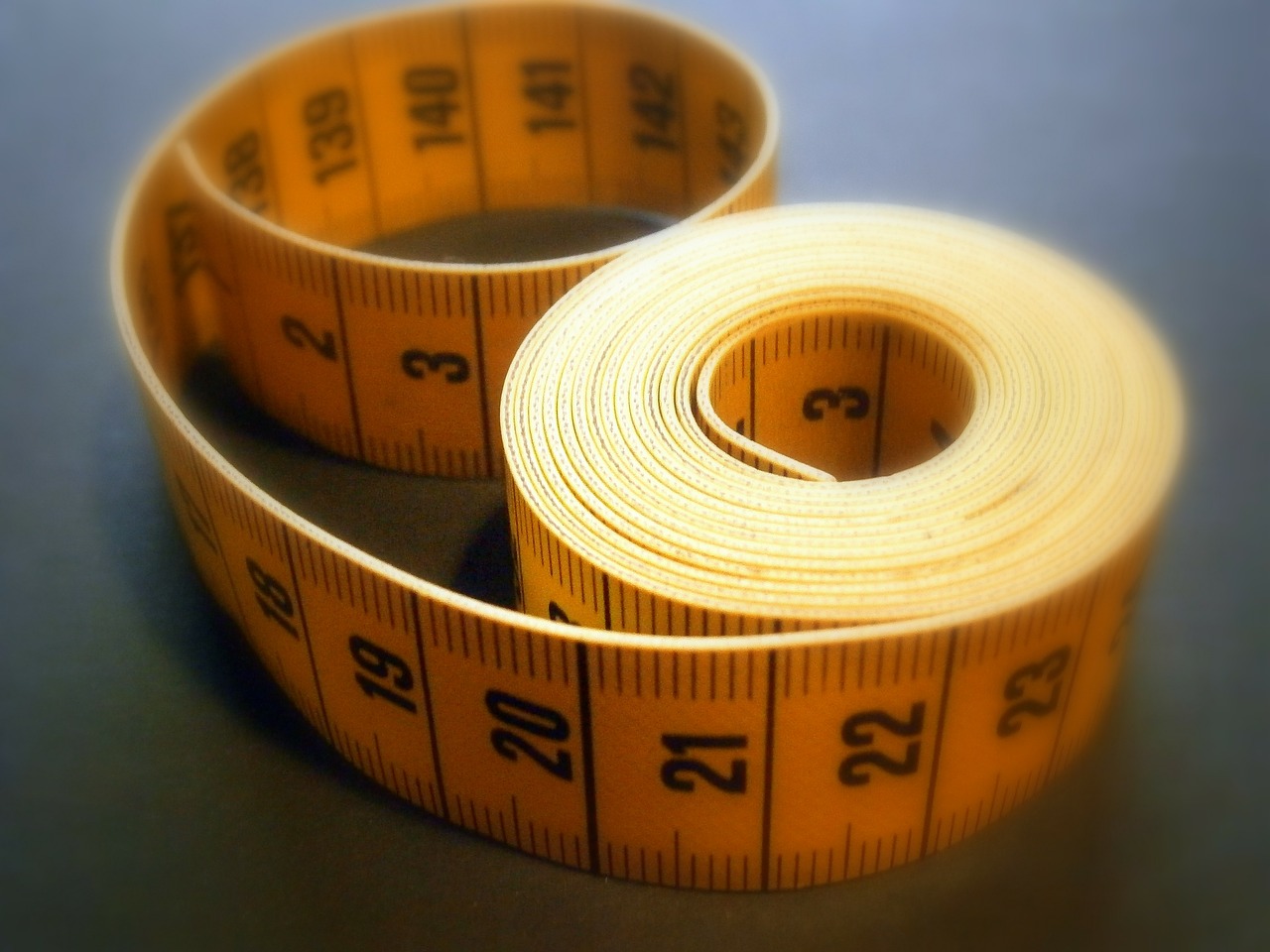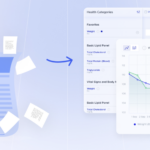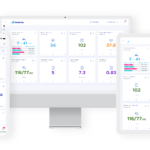For many people, using periodic tape measurements is much more effective than a typical scale for tracking changes in body composition.
We will cover the best practices for effectively using body tape measurements in this post.
You can track your body tape measurements alongside all your other vital health metrics using the Heads Up app. Get started using the button below. Or, read on to learn the basics of using the tape measure to track your body composition!
[maxbutton id=”4″]
Why Track Body Tape Measurements?
Scales don’t tell the full story
In many cases, you may be adhering to a well-designed nutrition and exercise plan but weight on the scale is not coming down the way you would like (it may even be increasing…). However, you notice your clothes are starting to fit better and you are looking and feeling thinner and more energetic.
This is a common scenario. Although the absolute number on the scale isn’t moving the way you’d like, your body composition is indeed improving dramatically as fat is lost and lean muscle is gained. Body tape measurements are an excellent way to understand how your body composition is improving in these scenarios.
Track muscle development
If strength training is part of your regimen, body tape measurements are a great way to understand which muscle groups are growing and which may need to be attacked differently.
Track your progress over time
One of the most rewarding parts about making healthy lifestyle changes is having a record of your progress over the course of months or even years so you can see how far you’ve come.
Compare with other metrics
Body tape measurements are a great way to understand *where* you are gaining, but it is also important to know *what* your are gaining. Thus, we also recommend tracking body fat percentage so you can determine if the gains are from muscle or fat.
Additionally, Heads Up can help you compare your body tape measurements with all other health and fitness data (blood sugar, diet, exercise etc.) so you have a complete picture of how your lifestyle choices are affecting body composition.
How to track body tape measurements with Heads Up
Step 1: Enter measurements
To get started, simply add the ‘Measurements’ tile to your dashboard so you can track these values alongside other important health metrics:
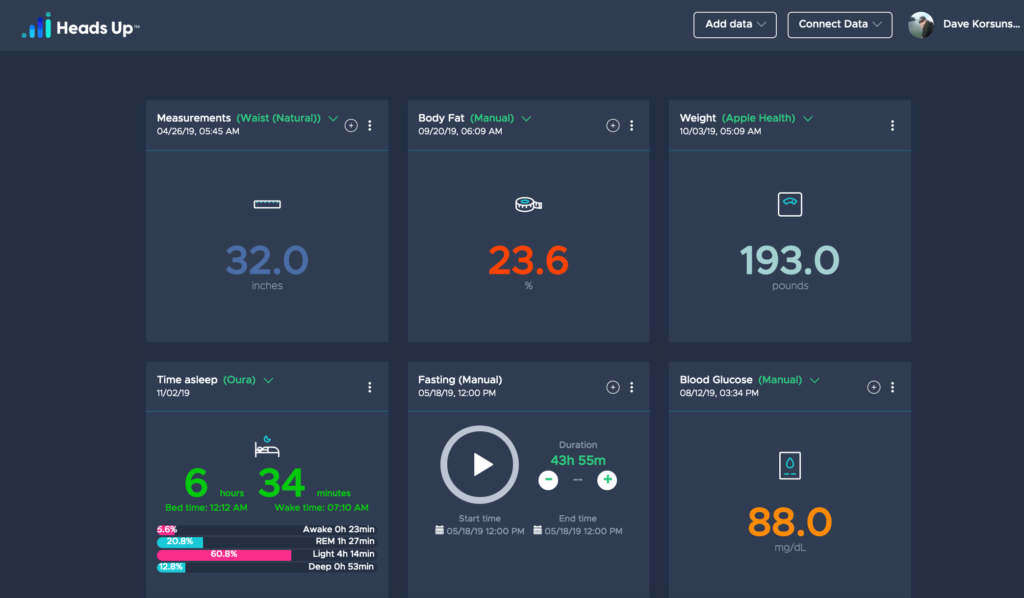
Add measurements to your dashboard
Then simply use the ‘+’ button on the measurements tile to add new measurements:

Enter your body tape measurements
Step 2: Track progress
Using the Heads Up app, you can graph your measurements over time to track your progress.
You can also graph your measurements together with other health metrics.
For example, it is well known that lowering blood sugar is an extremely effective way to lose weight. In the graph below, we can see how blood sugar and ketones, which sync automatically from the Keto-Mojo meter, compare to body tape measurements.
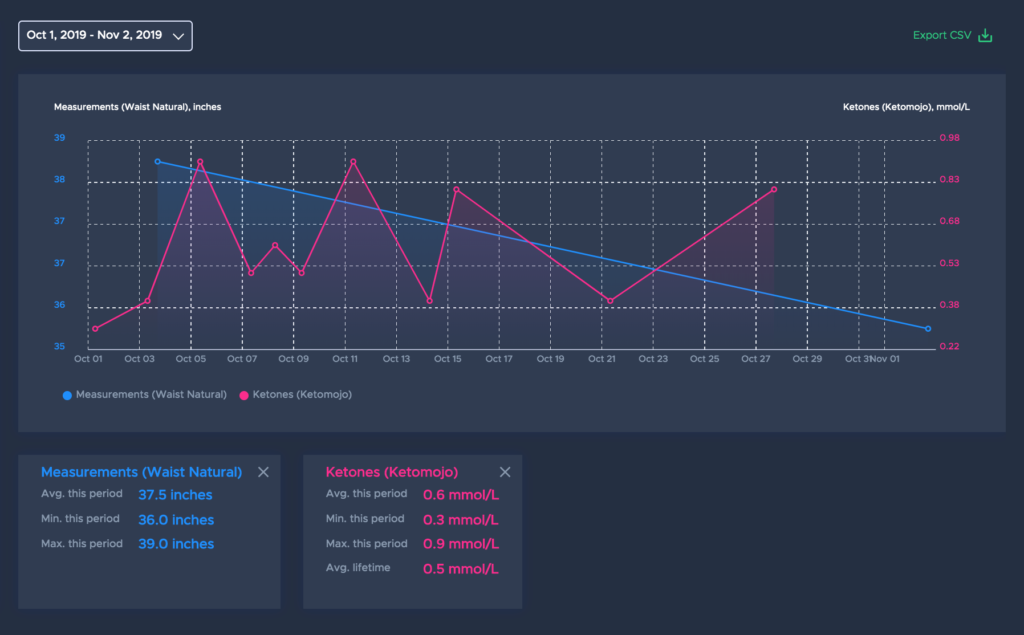
Compare measurements with ketones and blood sugar from the Keto-Mojo meter.
Step 3: Re-measure every few weeks
Periodically re-measure so you can correlate changes with your diet, exercise and lifestyle.
Best practices for body tape measurements
A few tips to ensure you are getting the most out of the body tape functionality in Heads Up:
- Consistency: Your goal with body tape measurements is consistency. The tape should be pulled to where it is lying flat against the skin all the way around. The pressure you put on the tape isn’t that important; it is only important that it is the same every time you do it. Use the same process every time you measure to ensure accurate results.
- Dominant side: For measurements such as bicep, forearm, calf and thigh, we recommend using your dominant side to collect measurements.
That’s it! You can create your Heads Up account and start tracking measurements using the button below.
If you’ve got comments, questions and/or feedback on how we can improve this feature, please contact us.
[maxbutton id=”5″]
